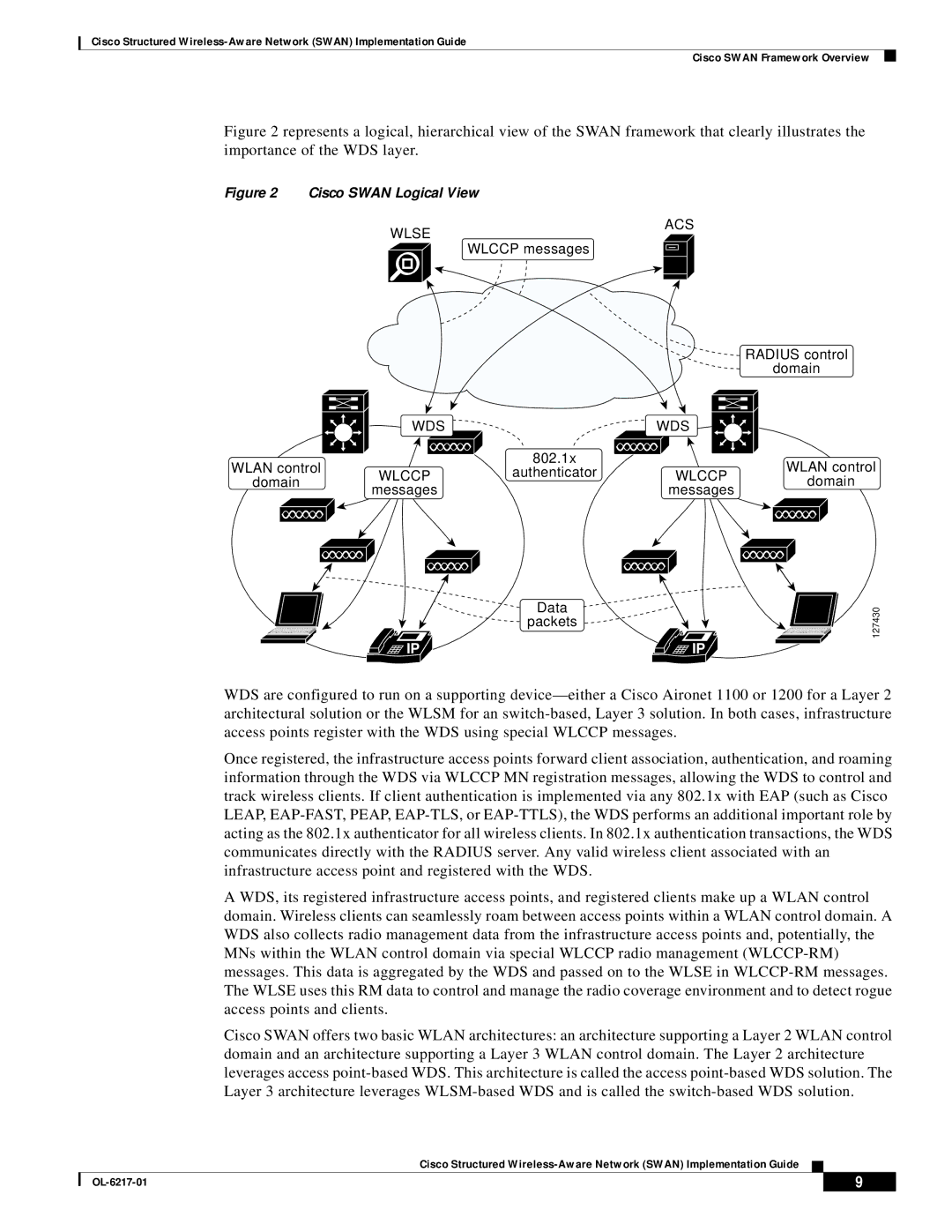
Cisco Structured
Cisco SWAN Framework Overview
Figure 2 represents a logical, hierarchical view of the SWAN framework that clearly illustrates the importance of the WDS layer.
Figure 2 Cisco SWAN Logical View
WLSE
ACS
WLCCP messages
RADIUS control
domain
| WDS |
| WDS | |
WLAN control |
| 802.1x |
| |
WLCCP | authenticator | WLCCP | ||
domain | ||||
messages |
| messages | ||
|
|
| Data |
| packets |
IP | IP |
WLAN control
domain
127430
WDS are configured to run on a supporting
Once registered, the infrastructure access points forward client association, authentication, and roaming information through the WDS via WLCCP MN registration messages, allowing the WDS to control and track wireless clients. If client authentication is implemented via any 802.1x with EAP (such as Cisco LEAP,
A WDS, its registered infrastructure access points, and registered clients make up a WLAN control domain. Wireless clients can seamlessly roam between access points within a WLAN control domain. A WDS also collects radio management data from the infrastructure access points and, potentially, the MNs within the WLAN control domain via special WLCCP radio management
Cisco SWAN offers two basic WLAN architectures: an architecture supporting a Layer 2 WLAN control domain and an architecture supporting a Layer 3 WLAN control domain. The Layer 2 architecture leverages access
Cisco Structured
| 9 |
| |
|
|
